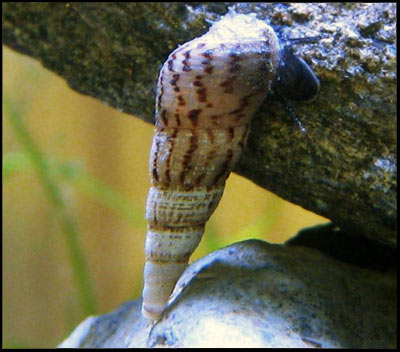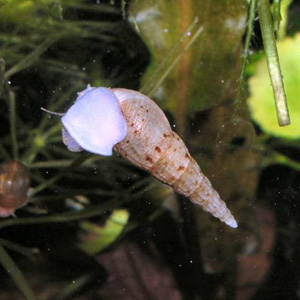Form and Function/Adaptations
The most noticeable feature of Melanoides Tuberculata is its long spiraling shell composed of Calcium Carbonate (Volger, 67). As with many other snail species its shell does offer protection from would-be predators. A secondary function of the spiral shell is that it allows M tuberculata to easily burrow into sand and gravel to gain access to added food and shelter (scientific-web 2013)
M tuberculata also has adaptations that allow the species to spread to more areas than other invasive snails and more difficult to remove from an ecosystem. M tuberculata is able to live in environments with relative high salinity for a freshwater snail of 32.5 ppt (scientific-web 2013). Also it is copper resistant which makes most copper snail treatments ineffective on the species as it resistant to the metal (aquariumdomain).
M tuberculata is not commonly active in sunlight. During daylight hours it will typically remain stationary or feeding under debris (scientific-web 2013). At night it will be more likely to move to new locations with what limited motion that the species has. Another night adaptation that M tuberculata has adapted is that when the mother releases the juveniles from the brood pouch it will do so at night to avoid earliest detection by predators. (Volger 70).

